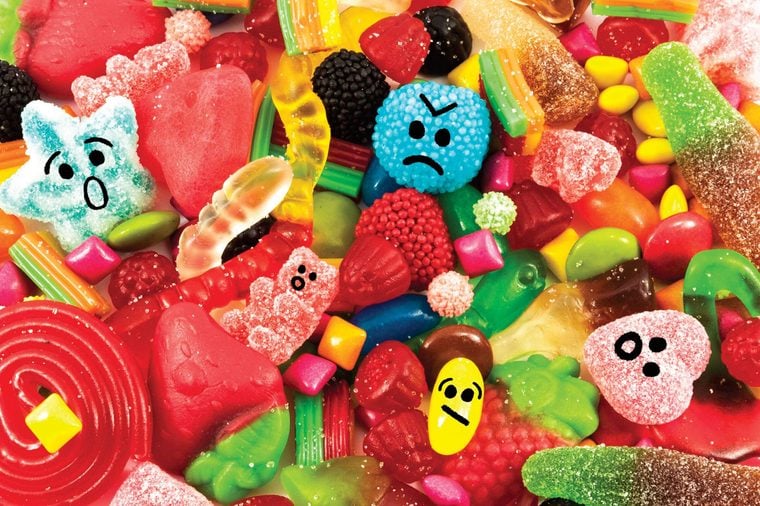
It hurts your heart
Harvard University researchers studied thousands of American adults over 15 years and found that those who consumed 25 percent or more of their daily calories from added sugar were more than twice as likely to die from heart disease as those whose diets included less than 10 percent of added sugar a day. The biggest sugar sources? Sweetened beverages, fruit drinks, grain-based treats such as muffins, and dairy desserts such as ice cream.
These are scary things that sugar can do to your body.
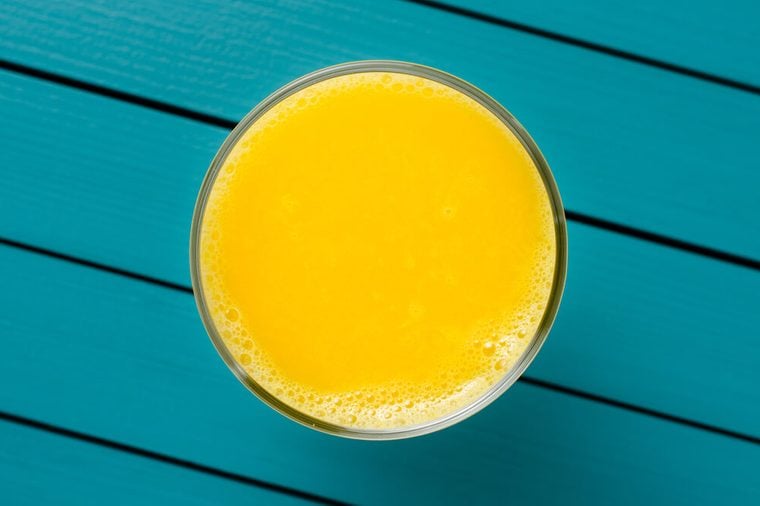
“No sugar added” doesn’t mean “healthy”
Even if a label says 100 percent juice, don’t chug with abandon. The drink may have no added sweeteners, but its naturally occurring sugars are far more concentrated than what you’d find in a piece of fruit. And unlike oranges and apples, which are high in fiber, juice offers empty calories and is of minimal nutritional value. (Find out if eating too much sugar causes diabetes.)
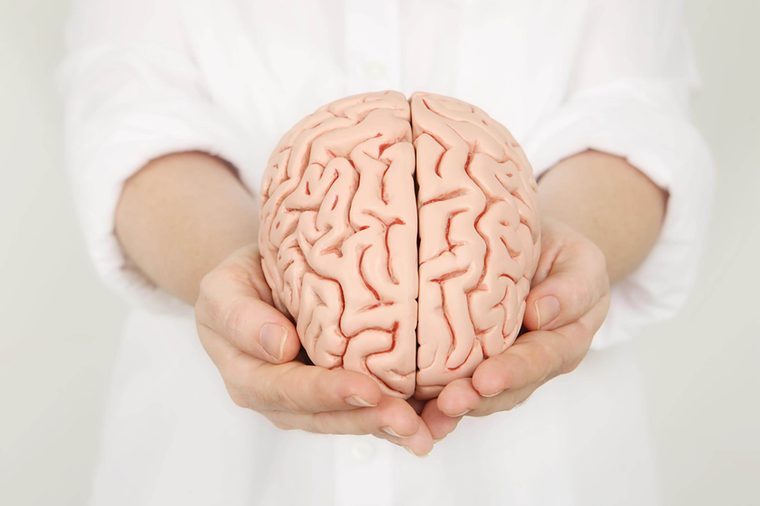
Excess sugar is linked to dementia
In 2017, researchers at the University of Bath found a molecular link between sugary diets and early Alzheimer’s. The scientists discovered that glycation—a reaction through which glucose affects cells—causes damage to an enzyme that’s involved in reducing abnormal protein buildup in the brain, which is characteristic of the disease.
These foods have way more sugar than you might have realized.

Sugar won’t make kids hyper. It’s worse than that.
A meta-analysis in the Journal of the American Medical Association (JAMA) found that sugar doesn’t affect children’s behavior. “It may simply be the environment where certain food is being served (for example, parties) that causes children to be more excitable,” says Andrea D’Ambrosio, a registered dietitian in Kitchener-Waterloo, Ontario. But it does spike their blood pressure and cholesterol. One 2016 study in Obesity showed that reducing young subjects’ sugar consumption for just nine days led to improvements in those areas, as well as in overall blood sugar levels.
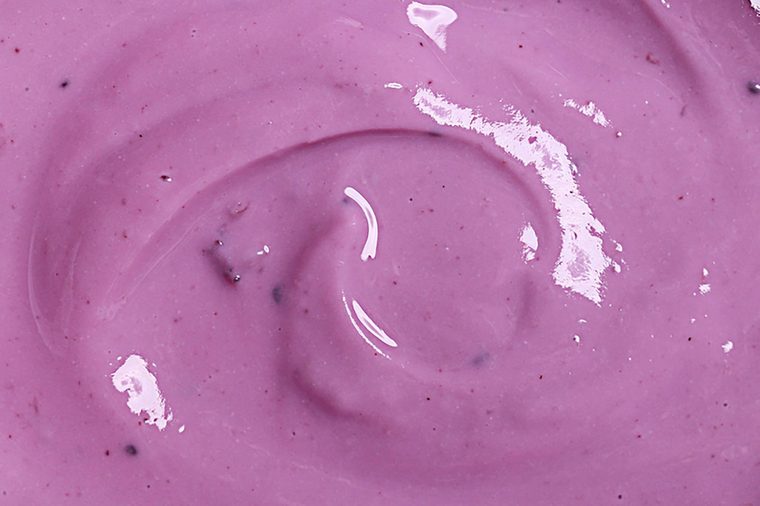
Snacks that sneak in the sugar
- Smoothies: A medium (16-ounce) store-bought smoothie has 30 to 80 grams of sugar. (A 1.6-ounce Hershey bar has 24 grams.)
- Trail mix: Conventional wisdom suggests stashing trail mix in your car for a healthy snack on the go, but a quarter cup of a commercial variety can contain 16 grams of sugar.
- Yogurt: A 5-ounce serving of fruit-flavored yogurt can contain 22 grams of sugar. If you top it with a quarter cup of store-bought granola, you’re downing another 6 grams.
- Salad dressing: Grabbing a salad for lunch is smart, but not if you pick the wrong bottled dressing. Some brands of French and raspberry vinaigrette have 5 or more grams of sugar per 2-tablespoon serving.
- Oatmeal: Flavored oatmeal packets may seem like a healthy plan for busy mornings, but they can contain as much as 12 grams of sugar per serving. (Heaping on a tablespoon of brown sugar adds an extra 12 grams.)
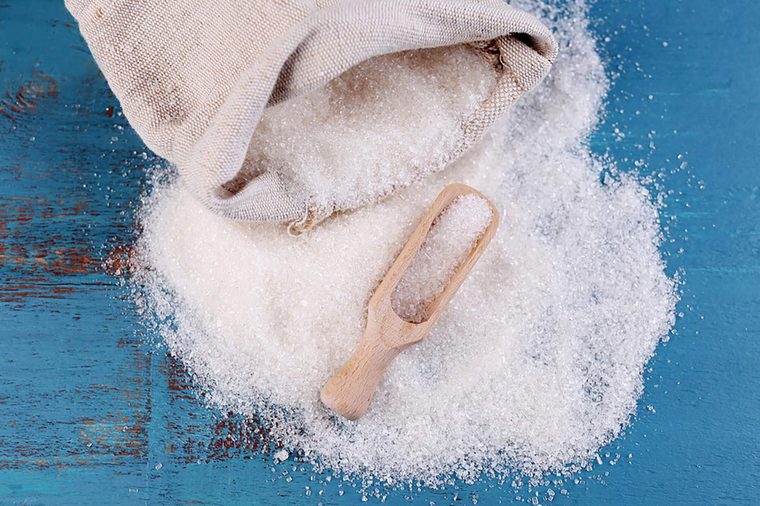
13 five-pound bags
This is the amount of added sugar the average American eats in a year—without noticing most of it. The American Heart Association recommends that men consume no more than 9 teaspoons (36 grams) of added sugar per day (about the amount in a Three Musketeers bar) and women no more than 6 (24 grams). On average, we each ingest 19.5 teaspoons (78 grams) a day.
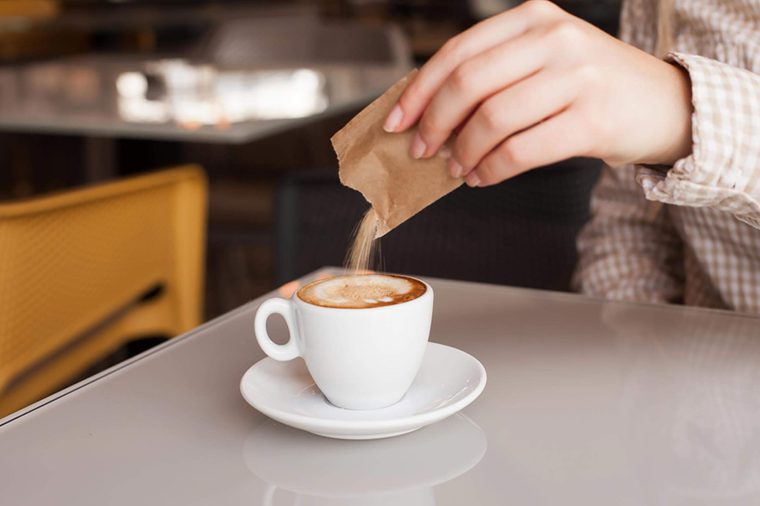
An expert says you should cut down—now
Laura A. Schmidt, a professor at the University of California, San Francisco, worries about all the damage sugar is doing to our bodies. That’s why she became lead investigator for UCSF’s SugarScience, a site developed as an “authoritative source for the scientific evidence about sugar and its impact on health.” Here is her strongest advice:
With all the negative news about sugar, should we switch to something else?
The evidence is mounting against sucralose, saccharin, and aspartame. Some research shows that these sweeteners damage the microbiome in the gut. They’re also associated with weight gain and glucose intolerance—the things people use them to prevent. Based on what we know, I wouldn’t consume those products or give them to my kids.
How do you keep added sugar from seeping into your own diet?
I just don’t have it around the house. Take all that stuff out of your environment. Once you start cutting back, you’ll lose your sweet tooth. It’s a palate phenomenon, and it doesn’t take long. You’ll notice that you can suddenly taste the natural sweetness in unprocessed food, and you’ll start to find processed products cloying and unpleasant.
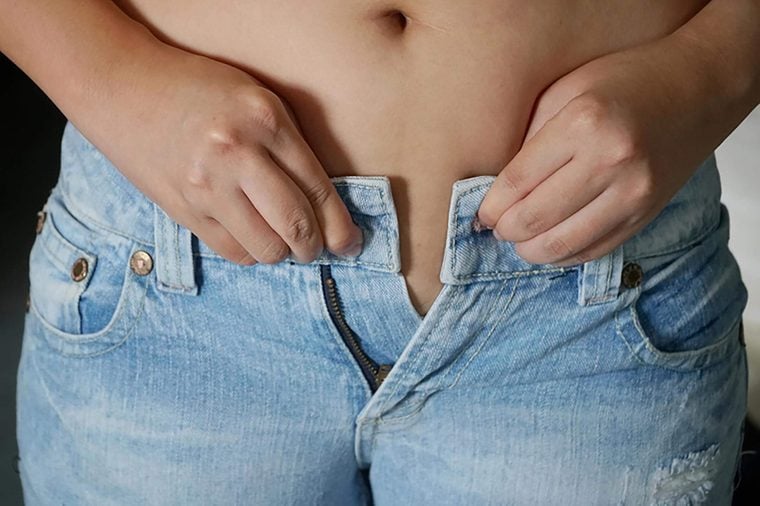
Sugar is as bad for your liver as alcohol
Unlike other forms of sugar, fructose is processed in the liver. Though it occurs naturally in fruit, we’re still consuming too much of it thanks to our penchant for foods with added fructose sweeteners, and it’s leading to a rise in nonalcoholic fatty liver disease (NAFLD). One visible red flag: a sugar belly (yes, like a beer belly). Why? The liver breaks down excess fructose into fat globules that travel through the bloodstream and lodge around your midsection and internal organs. And, like the liver damage produced by alcohol, NAFLD causes inflammation and scarring. “It is one of the leading causes of liver transplants,” Schmidt says.
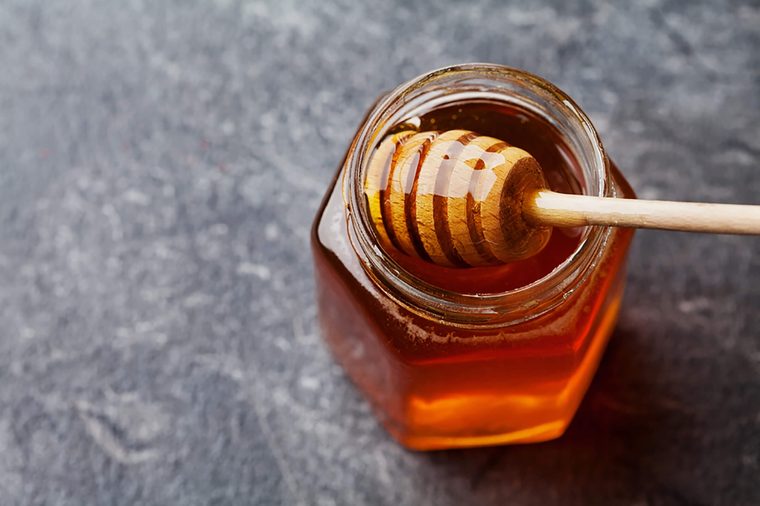
“Healthier” sweeteners are no better for you
Those trying to cut down on sugar may be drawn to studies that tout maple syrup’s antioxidant benefits or honey’s healing power. Ignore them, says D’Ambrosio. “Sugar doesn’t add a significant amount of other nutrients,” she says. “Sugar is sugar, so it’s best used in moderation no matter what form it takes.”
Try these tips to maintain healthy blood sugar levels.
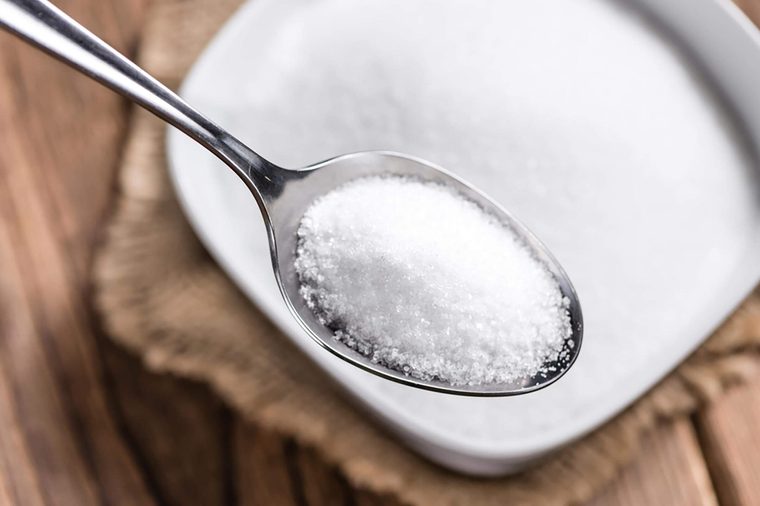
35 teaspoons
That’s the number of years you could potentially prematurely age yourself if you drink a 20-ounce sugary beverage every day—an effect comparable with that of being a regular smoker.
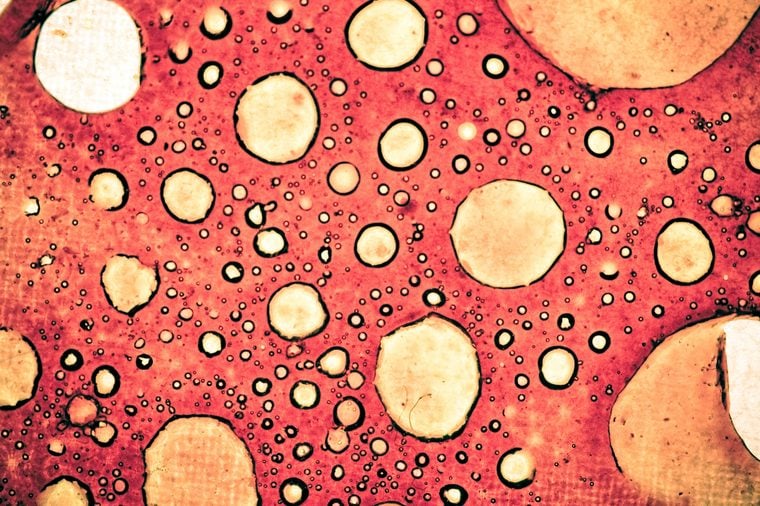
Cancer cells can be sugar fiends
Research from the University of Texas at Dallas shows a link between sugar and squamous cell carcinoma, which is hard to treat and accounts for about a quarter of all lung cancers. All told, the study found, four types of squamous cell cancer consume a lot of sugar.
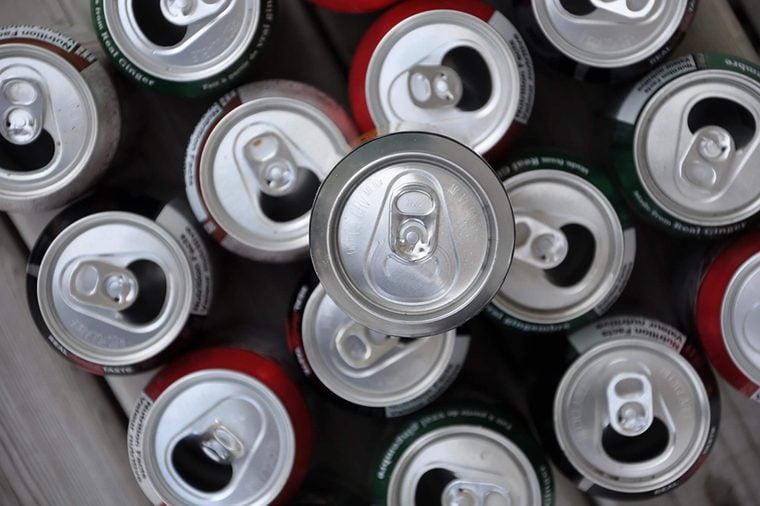
4.6
That’s the number of years you’ll prematurely age yourself if you drink a 20-ounce sugary beverage every day—an effect comparable with that of being a regular smoker.

Sugar may keep you up at night
A 2016 study in the Journal of Clinical Sleep Medicine shows eating more sugar (along with less fiber and more saturated fat) is associated with lighter, more disrupted, and less restorative sleep.
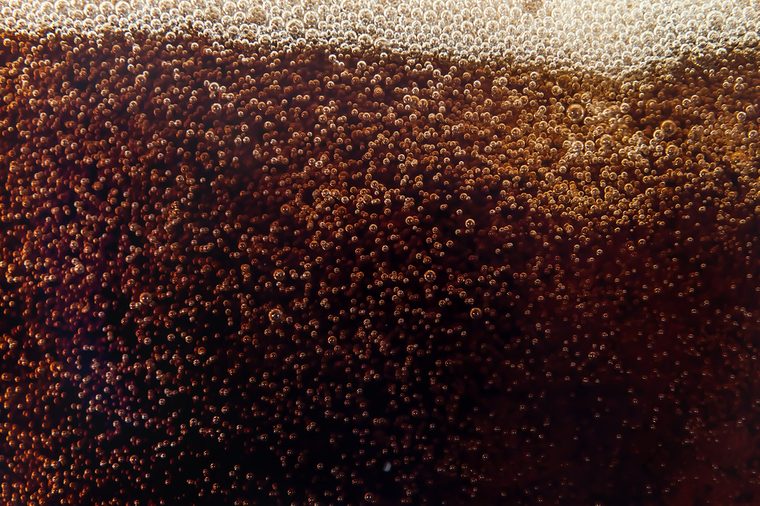
We’re still drinking too much liquid sugar
Good news: We are drinking less soda. Sales of carbonated soft drinks are at their lowest level in 30 years. Bad news: We’ve replaced it with options that may be just as unhealthy. Sales of flavored waters, ready-to-drink coffees and teas, energy drinks, and sports beverages are all growing. Energy drinks contain about 30 grams of sugar, sports drinks contain about 40 grams, and your average flavored latte comes in at around 45 grams.
Here’s how you can kick your sugar addiction without missing the sweet stuff.
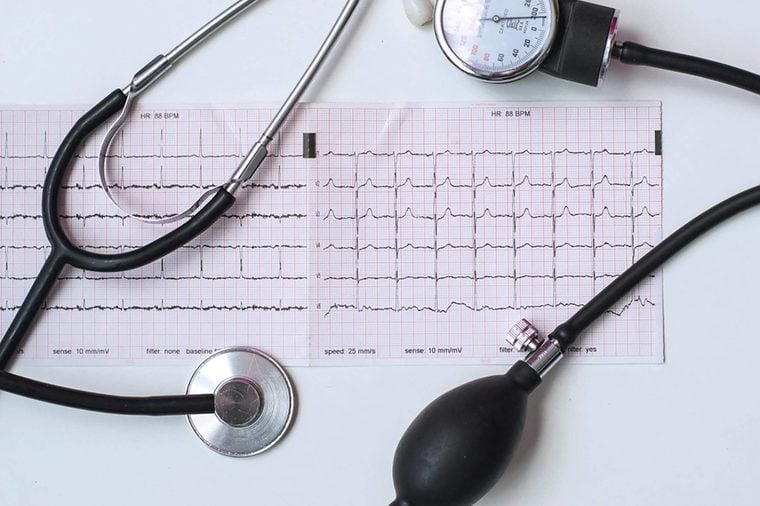
Sugar messes with your cholesterol
A 2010 study of 8,495 Americans over 18 published in JAMA found that as subjects’ added-sugar intake went up, their levels of HDL (good cholesterol) dropped, increasing their risk for cardiovascular disease. The study also found that women in particular who ate or drank more added sugar had higher levels of LDL (bad cholesterol) density.
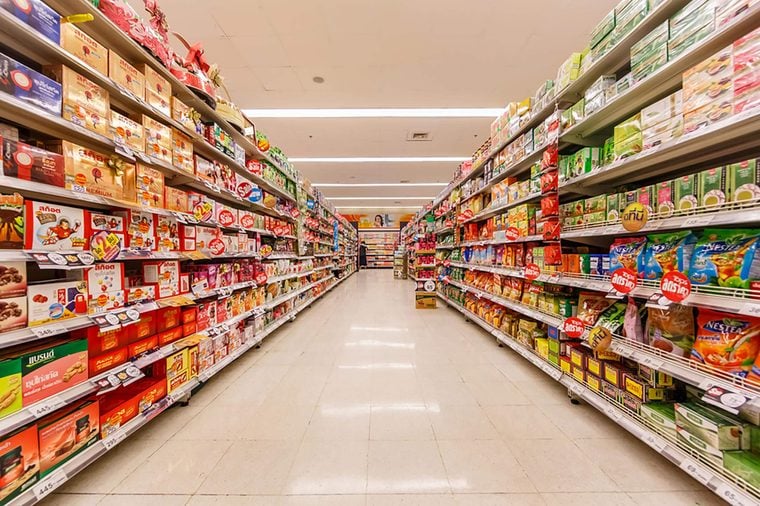
74%
That’s the percentage of packaged foods that contain added sugars, according to a study published in the Journal of the Academy of Nutrition and Dietetics, which analyzed more than 85,000 food items sold in the United States.
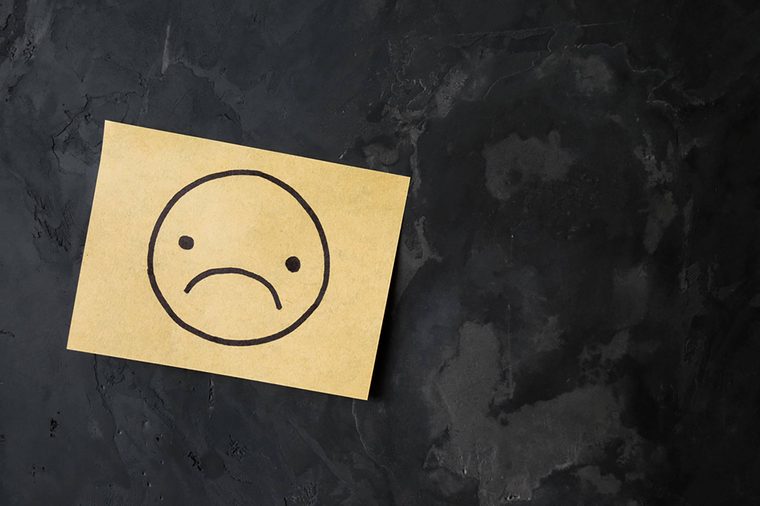
Sugar can make you sad
Ending a bad day with a bowl of Ben & Jerry’s may make you feel worse in the long run. In 2015, Columbia University Medical Center researchers found that postmenopausal women with diets high in added sugar and refined grains were at an increased risk of new-onset depression, while the risk decreased in subjects who ate more dietary fiber, whole grains, vegetables, and unprocessed fruits. Try these tricks to help reverse your sugar binge if you ate too much.
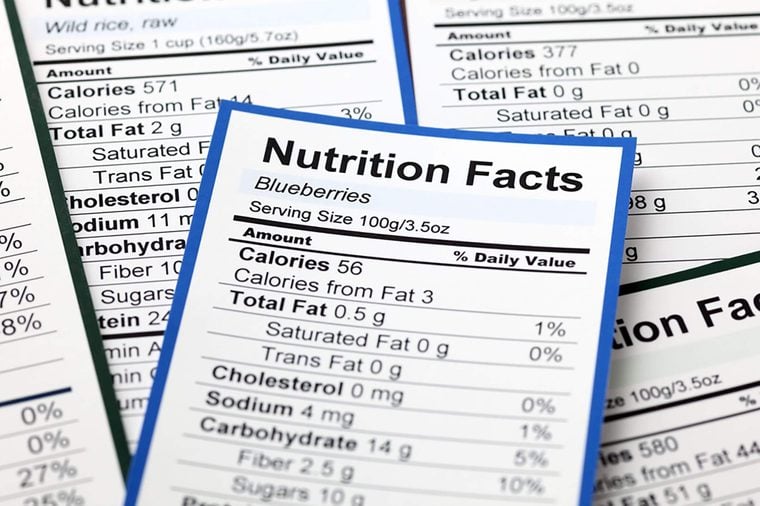
Some food labels can hide sugar content
For the first time in 20 years, the FDA is revising nutrition labels for packaged foods to better highlight the links between diet and chronic diseases. A particularly welcome change is the way the new label lists sugar.
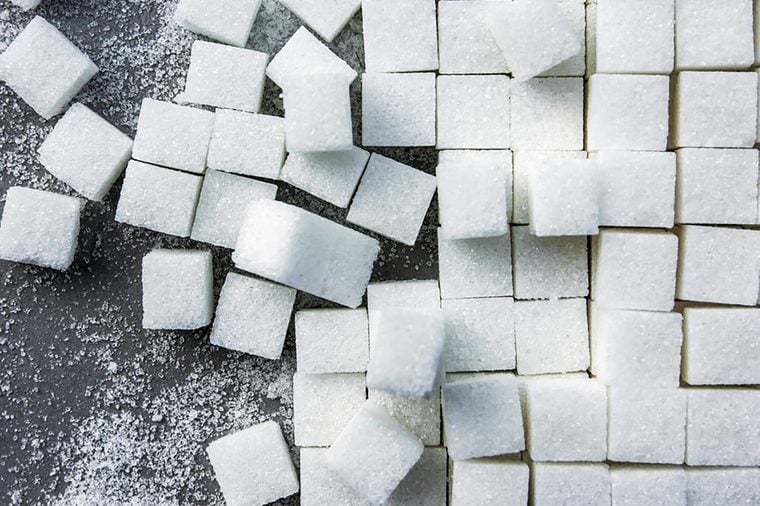
Beware: you may be eating incognito sugar
Here are ten sneaky pseudonyms manufacturers use to fool you into thinking their food isn’t packed with the sweet stuff:
- Amazake
- Carob powder
- Corn syrup
- Dextrose
- Evaporated cane juice
- Fructose
- Fruit juice concentrate
- High-fructose corn syrup
- Honey
- Maltose
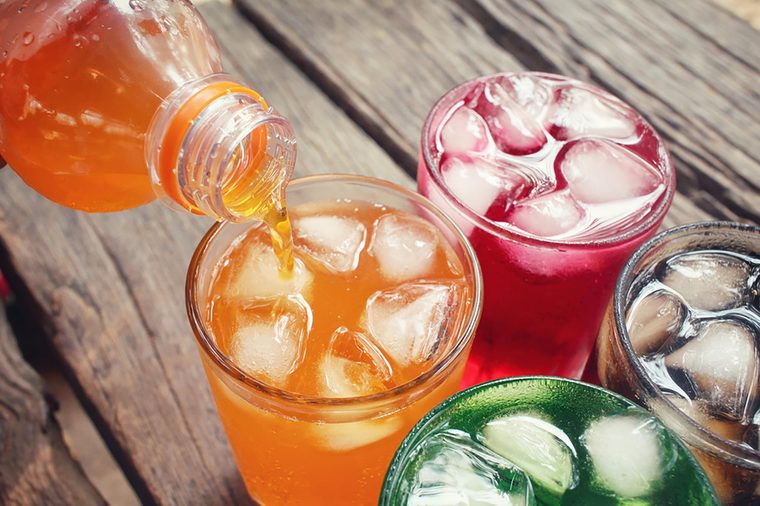
Sugar takes your breath away
Scientists have long suspected a link between sugar-sweetened beverages and asthma. After analyzing data from 146,990 adults in the United States, they found that, sure enough, adults who downed at least two of these drinks a day were more likely to have respiratory issues.
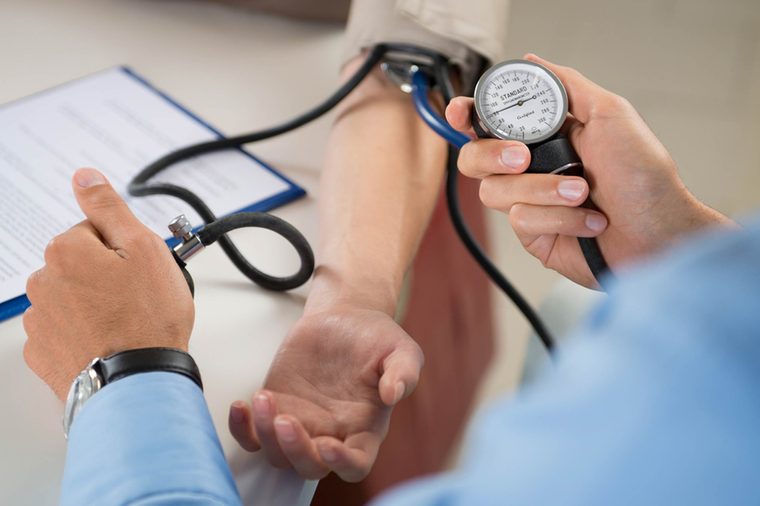
Sweets could be worse than salt for hypertension
According to a study in the Journal of the American Society of Nephrology in 2010, a high-fructose diet can push your blood pressure over the threshold of 120/80, which is considered the upper end of normal. In a 2014 research review published in the journal BMJ Open Heart, medical experts argued that added sugar intake may have the most dramatic effect on blood pressure—and, in fact, could be more detrimental to heart health than sodium.
This is what happens to your body when you stop eating sugar.
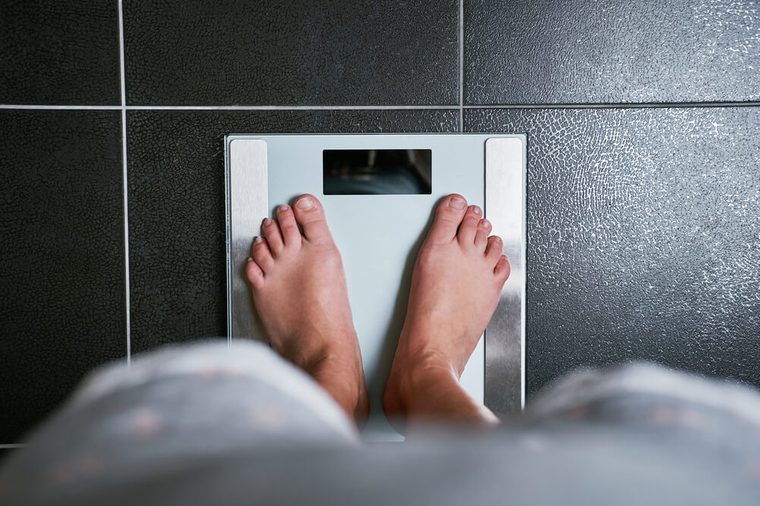
It’s bad for your body mass index
Researchers from the University of Reading, the University of Cambridge, and Arizona State University studied the sugar intake of 1,700 men and women ages 39 to 77 in Norfolk, United Kingdom. According to a study published in 2015, they found that those who ate the most sugar were 54 percent more likely to be overweight (that is, have a body mass index over 25)—and were also more likely to have underreported how much sugar they consumed.
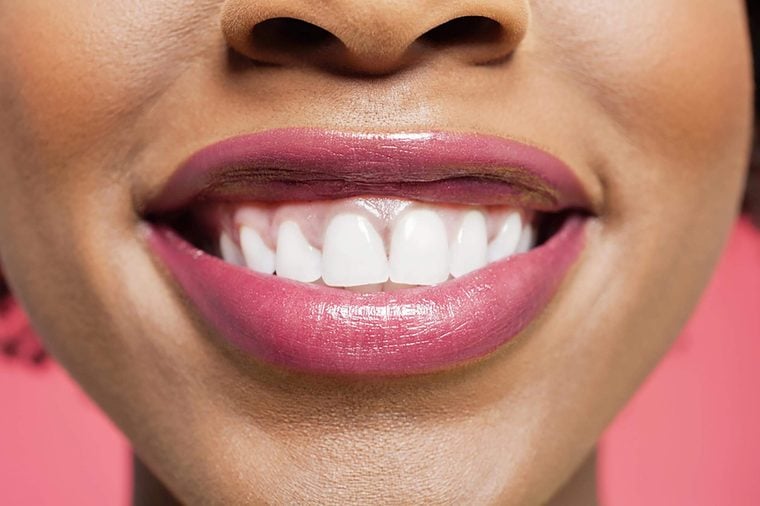
Sweet treats ruin your teeth …
Your childhood dentist was right—sugar causes cavities. Here’s what happens.
- You sip a sweet coffee shop beverage.
- Bacteria in your mouth thrive on sugar, which provides them with energy.
- Those micro-organisms multiply, creating a film of plaque on the surface of your teeth.
- The plaque produces an acid that dissolves the minerals that make up the hard surface of your teeth.
- The longer the plaque builds up, the worse the damage will be. Tiny holes appear and expand until they become cavities.
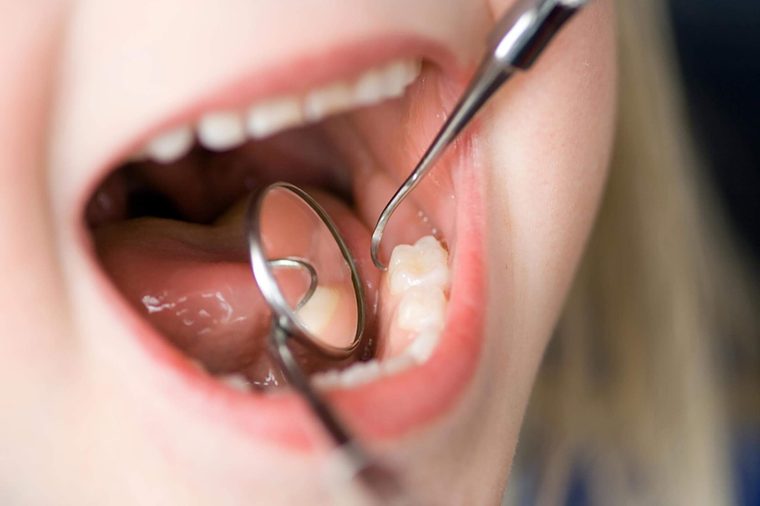
… and make your gums bleed
Most kids grow up learning about the connection between candy and cavities. Turns out, a high-sugar diet also inflames your gums and increases your risk of periodontal disease, based on a 2014 study in the American Journal of Clinical Nutrition. Signs of periodontal disease include bad breath, bleeding gums, and sensitive teeth.
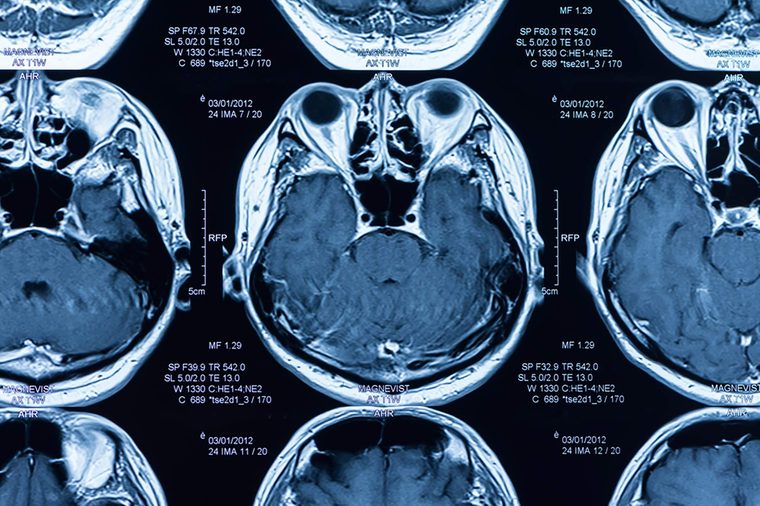
You might be addicted
Though some researchers quibble with the idea that sugar is addictive, past studies, including a 2015 paper out of the Massachusetts Institute of Technology, do show that sugar elevates levels of the neurotransmitter dopamine, which forms a key part of the brain’s reward and pleasure centers, in a way that’s remarkably similar to the effects of nicotine and morphine. “There’s growing evidence that sugar leads to cravings and withdrawal, which are the hallmarks of addictive disorders,” says Schmidt. “You can see the effects on an MRI.” Now Australian researchers have discovered that drugs typically used to treat cocaine and nicotine addiction, such as varenicline, could help so-called sugar addicts kick their cravings as well.
Watch out for these clear signs that you’re eating too much sugar.